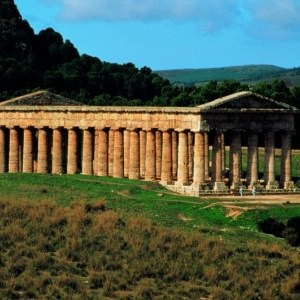Segesta

The city was founded by the Elimi in pre-Hellenic times, a population of uncertain origin, probably Eastern Europe. Soon it rose to great importance both economically and for its strategic location between the Punic cities of north and west coasts. It was the eternal enemy of Selinunte, against which he called in 409 BC the aid of the Carthaginians, who razed. The destruction of Selinunte permanently marked the entrance of Segesta nelI'orbita Punic, but this did not influence on the costumes of the population which, on the contrary, were increasingly ellenizzandosi. During the Roman domination, the city had a good treatment due to a supposed "relationship" between the two peoples, but also went decaying more and more, until he lost his name. To date has been very little explored, although the excavations in progress has already brought to light the first vestiges of the old buildings. Have been brought to light only two monuments, the theater and the temple. The first, founded in the fifth century at the top of Mount Barbaro, in a highly dramatic, it was rebuilt in the Hellenistic age and today maintains the appearance of this second building. The cavea, 63 m in diameter, is in good condition, while the scene remains only the lower structures. The theater is used for classical performances. The temple is probably the most conspicuous building in a suburban sanctuary still unexplored. Also built in the fifth century, is a hexastyle peripteral. It looks unfinished columns were not fluted, there are no traces of the cover and the cell. The temple grandeggia alone on a hill in a very suggestive position, and is one of the most perfect and best preserved examples of Doric art.
← Back to routes